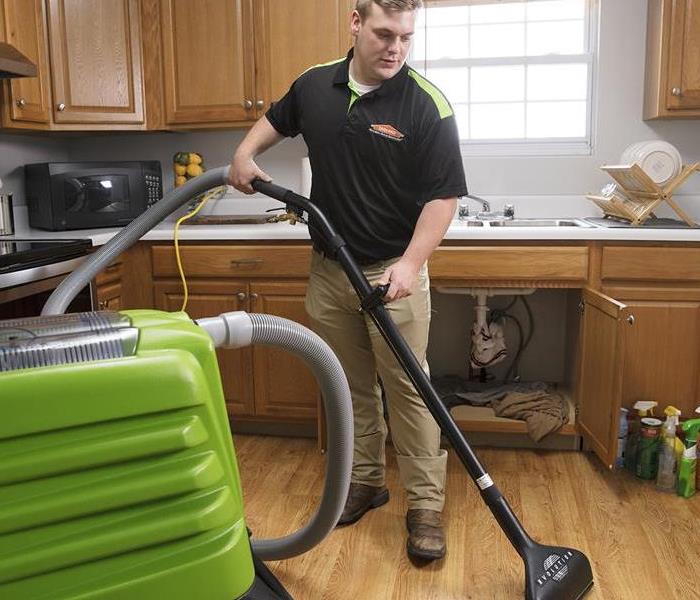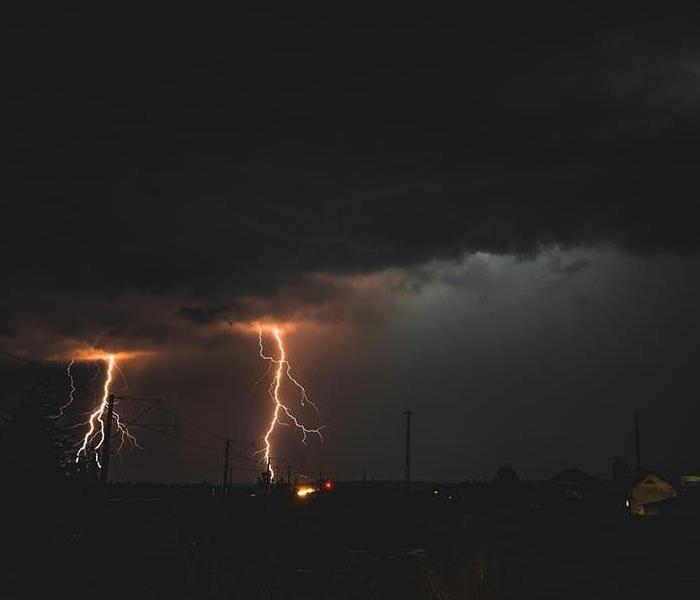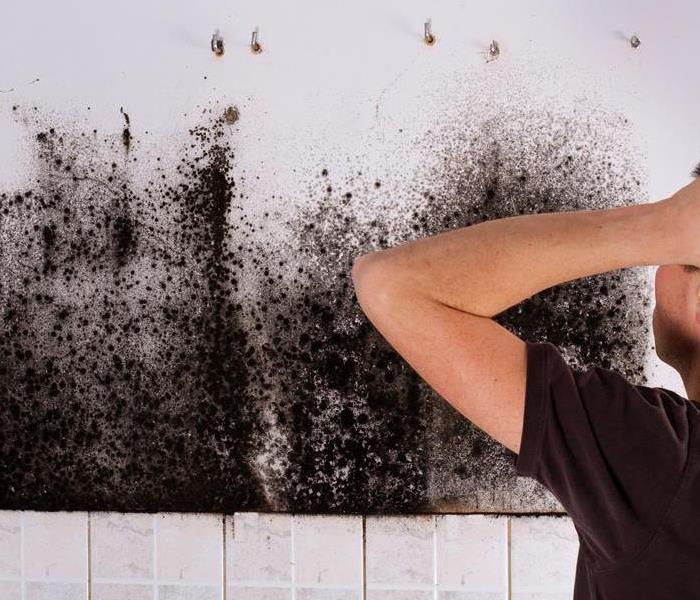Recent Posts
What is Water Mitigation?
5/17/2024 (Permalink)
If you clicked on this blog, it is likely because you are seeking water mitigation services but need a better understanding of what it exactly is? Water mitigation is the process of reducing or preventing the damage caused by water after a leak, burst pipe, or flood.
The primary goal of water mitigation is to minimize the impact of water damage and prevent secondary issues such as mold growth. SERVPRO® specializes in water mitigation and uses advanced equipment to clean up water from your home or business.
SERVPRO follows significant steps for water mitigation. After we arrive and perform the initial assessment, our technicians:
- Remove Water and Dry It Out – using wet/dry vacuums, dehumidifiers, industrial fans, and other tools; we begin extracting water and increasing airflow to achieve optimum drying conditions.
- Thoroughly Inspect Damage – We look at any areas impacted by water, determining what can be restored and what must be replaced. This may involve inspection of flooring, wall cavities, belongings, electrical outlets, and more.
- Disinfection – After your home is free of water and drying wraps up, we thoroughly clean and disinfect all surfaces affected by water. Our Green Fleet comes stocked with a full selection of EPA-registered cleaning agents.
No stone must get left unturned when it comes to water mitigation, regardless of the event that caused the emergency. We feature highly-trained and certified technicians that know how to adapt to each situation to ensure the best results.
Our 24-hour emergency restoration services are here whenever you need them, which is the perfect way to restore your interior to pre preloss condition “Like it never even happened.”
Storm Safety Tips
5/17/2024 (Permalink)
Depending on the season and your location, your business may be vulnerable to damage from intense rain storms, tornadoes or hurricanes. Following several key safety guidelines can help you protect your building and safeguard the wellbeing of your staff.
- Keep Trees Trimmed
Tree branches can become dangerous objects during strong winds. To minimize the risks of broken windows and roof damage, you should keep trees adjacent to your property neatly trimmed and routinely remove dead branches.
- Stay Away From Windows and Skylights
Flying debris can easily shatter windows and skylights. As a precaution, everyone should move away from these structures during a severe storm with high winds or hail.
- Elevate Essential Equipment
A significant rain storm can increase the risk of flooding. If floodwaters enter your building, essential equipment, including components of your HVAC system, may be vulnerable to water damage. To alleviate this concern, you should elevate important devices off the floor.
- Move to an Internal Room
In the event of a tornado, seeking adequate shelter is essential. Your staff should promptly move to the basement or a windowless, interior room on the lowest level of the building.
- Avoid Using Electronic Equipment
Because cords conduct electricity, using electronic equipment during a thunderstorm can be dangerous. Staff should shutdown computers and avoid using phones until the storm has passed. As an added precaution, you should utilize surge protectors to safeguard vital equipment from potential damage.
- Inspect Your Roof
Hail and strong winds can wreak havoc on your building’s roof and cause damage that may lead to destructive leaks and potential mold contamination. For this reason, it’s a good idea to inspect your roof after any storm and promptly commence any necessary repairs.
A severe rainstorm can produce damaging high winds and cause extensive flooding. Taking proactive measures can help businesses avert serious injuries and minimize the risk of significant destruction.
The 3 Signs of Mold
5/14/2024 (Permalink)
Mold is a type of fungus that develops from tiny spores that float around in the air, both indoors and outdoors. Mold is often found in humid or moist places, and if allowed to grow unchecked, it can present issues for a building. With that in mind, we offer this quick list to help you identify mold is growing in your building:
1) Musty Odor
Even if you cannot see mold, it can be in your home or business. A very common indicator of the fungus is its smell. When mold grows in an area of your building, you will notice a pungent and musty smell. Take action immediately when you notice the odor. Mold overgrowth can cost you a great deal of money and even your health. You may not be aware of the full extent of the problem until professionals check in between walls and under floors.
2) The Appearance of Mold
Mold may look like cotton, granules, or leather. It can appear in various colors like white, green, gray, black, brown, or yellow. Unfortunately, many people ignore small mold and mistake it for soot or ordinary dirt. Take immediate action when you see tiny discolored and fuzzy growth on furnishings or the surface of building materials.
3) Water Leaks
If you notice water leaks from ceiling pipes, water stains, or standing water, mold might become an issue. Water leaks cause moisture, and that provides an excellent growing place for mold. Check for discoloration or watermarks on carpets, walls, and other materials for hidden mold.
Any business or home can face a fungus fiasco. If you suspect that you have a mold problem, SERVPRO® can inspect the property. Mold remediation is one of our specialties and we can eliminate the issue safely. We also invest in state-of-the-art equipment and continuous training that ensures your home or business is quickly and efficiently restored.
Give us a call today!

 24/7 Emergency Service
24/7 Emergency Service


